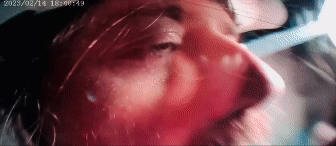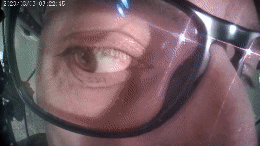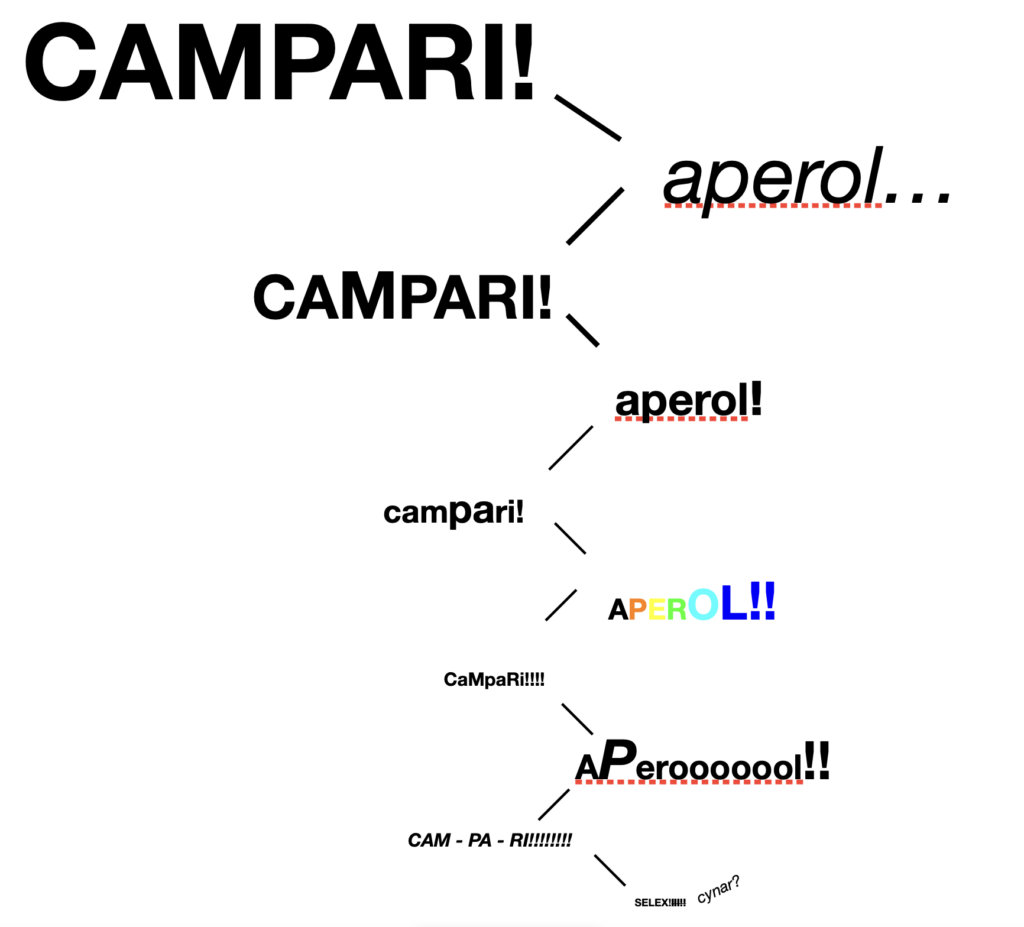
CESA – aka, L’uomo delle stelle
L’uomo delle stelle (The Man of the Stars) is a project conceived for the Reale Cappella Espiatoria in Monza. It was part of a public commission by the Direzione Regionale Musei Lombardia in 2022, curated by Giulia Valcamonica and Matteo Balduzzi. The aim of the public commission was to reinterpret the public museums of Lombardia.
The aim of my project was to shed light on a very hidden part of the museum, the “Stele” (a 35m high column, a major part of the actual museum); in particular on the inside of the Stele, a complex but forgotten and mysterious place, full of light, but untraced.

The Reale Cappella Espiatoria in Monza - seen from one of the side buildings

The Stele has been turned on (you can see the faint light coming through the crosses)

The Reale Cappella Espiatoria, side view
The monument is a museum, as it is divided into three different parts: Cripta, Sacello, Stele.
CRIPTA
Inside the Cripta, the great room at the bottom, there is the Cippo, a black rock. It pinpoints the place where the king was shot.
SACELLO
The part where people can gather and pray, it looks like a very small church, with all the usual paraphernalia.
STELE
The tall column that is carachterized by two giant crosses. They are made of alabaster and when the light inside is turned on (every 29th of July), they somehow seem to light up, by letting the light pass through.
Roll your cursor, and explore photogrammetry of The Cippo.

The Cippo
Accompanied by one of the guards (Domenico), I asked him how to climb up the stele to change the bulbs. The answer was that he did not know exactly how it was done, that he had never seen it done, and that he thought that the ring with a lamb on it might be a trap door, but in the end he had no idea about the whole thing.
Since then, I have been investigating the lighting system without being able to find enough material or accounts from people who actually went up. No direct testimony (almost… plot twist). The last confirmed time was 1996 (papers…). I found this halo of mystery interesting and fascinating. I thought it would be nice to send someone inside the Stele to document it and replace the light bulbs with more efficient ones, appropriate to the new times.
Like an astronaut travelling to the moon, like the astronaut in Interstellar travelling through wormholes to places thousands of light years away.
Revealing to Domenico that he was going to become the astronaut

Testing the helmet

Re-setting the stars of Palazzo Reale

The lamb on the trap door, leading to the Stele

The Grand opening of the Reale Cappella Espiatoria in Monza - 1910 - I have added two giant screens tho
CONTEXT
The Reale Cappella Espiatoria di Monza is a museum and a monument. It was built on the exact place where the King Umberto I was assassinated by the anarchist Gaetano Bresci. It happened in 1900, on the 29th of July.
In my opinion it represents, borrowing Gaetano Bresci’s words, the point where two principles collided: on the one hand the idea of the sovereign and on the other the idea of the anarchist. Two errant particles that found exactly in that point, at the base of the great alabaster crosses, the place and the moment for mutual annihilation. As in every particle collision, the two initial elements vanish, disintegrated in the impact, and new ones are born, each with independent trajectories. The Reale Cappella Espiatoria, in this sense, acts as a geo-locator with respect to the point where this collision occurred: the point of origin of alternative further reasoning.
What was meant to be a peremptory call for expiation (at least in the mind of the Queen, who wanted to build this monument immediately after the death of her husband the King Umberto I) quickly changed its shape by allowing the thousands of new individual trajectories to move from that point. This process of changing meaning occurred through successive layers of continual denials of the original meaning. Beginning with the alleged inscription by Benito Mussolini “monument to Gaetano Bresci,” continuing with inscriptions praising the anarchist, and ending with the proposal to preserve one of the graffiti still present on one of the walls, the monument’s user community and popular sense have repeatedly provided for a sort of metaphorical cancellation of the meaning of this monument itself. Unlike a far more radical attack, however, such as that of ISIS in Palmyra in 2017, which involved the disappearance of the original artifact, or to recent episodes of destruction of statues related to the colonial past and then the total cancellation of the actual presence of the work, in our case the Sacconi-Cirilli (the architects who built it) monument has remained standing.

The helmet coinceived for transmitting both videos and audio from space

Re-setting stars, inward view of one of the cameras of the helmet

Re-setting stars, outward view of one of the cameras of the helmet
These continuous statements of rejection, however, are still balanced by those of reaffirmation of the original concept. In fact, every end of July, pro-monarchists perpetuate the tradition of going to the monument to pay their respects to the dead King and in order to flex their right to reaffirm their beliefs.These manifestations are flanked by others that are exactly opposite, often hidden, which only perpetuate that process of annulment and reshaping of meaning that I mentioned above. An enduring fondness for those two original particles that decided to meet at that point. I decided to focus on the generative effect of this confrontation rather than to focus on either sides.
For example, the first moments were useful for me to carefully understand the dynamics of that collision. At the point where this occurred, a monument arose. The bodies of the two characters, the shells that ferried these two principles, were spaced enormously apart both from each other and from the point of the collision. One ended up in Rome, the other in an anonymous cemetery on the island of Santo Stefano.
Nonetheless the heirs’ will was immediate: “the spot should be marked with a cross!” This point was then fenced off and protected. From the cross that marked that point was hung a lantern that at night allowed the watchmen to make sure that no one tampered with the crime scene. That cross expanded, doubled in size and became a backlit alabaster double cross. The watchman stood observing it, and to this day he continues to do so. The light from that lantern has never gone out.

geo-localisation of an event throughout the years
A sophisticated operation of geo-localization of an event, which as I have already mentioned, I believe to have acquired over time a different and broader potential for impact on contemporaneity than the initial design premises.

Spritz battle

Space Guy
The project though, never really happened. In fact the whol group of artists and their projects were invited to take part to a group exhibition at Palazzo Reale in Milan in March 2023. I decided to set up an installation that was sort of mimicking what was going to happen. I asked to an electrician, Andrea Di Nardo, to help me with a performance. He was going to change the light bulbs of one of the rooms of Palazzo Reale, exactly the one where I was exhibiting the project. Simone Panzeri, my assistant, was meanwhile going to talk to him as if he was a sort of Capcom from Huston. the result has been interesting and hilarious.

Stories screenshot

Stories screenshot

BTS

Stories screenshot
View from the stars